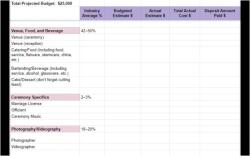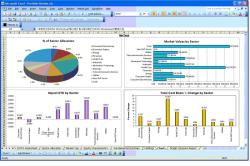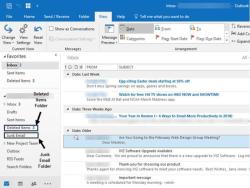What is the best way to serialize a binary object?
Serializing a binary object is the process of converting it into a format that can be easily stored, transmitted, or reconstructed. The specific approach you should take for serializing a binary object can vary depending on the programming language and the requirements of your application. However, here are some best practices for serializing a binary object:
Choose a Serialization Format:
- Select an appropriate serialization format that suits your needs. Common formats include JSON, XML, Protocol Buffers, MessagePack, and BSON. The choice depends on factors like data structure complexity, human-readability, and data size.
Use a Library or Framework:
- Utilize a proven library or framework for serialization. Many programming languages offer built-in or third-party libraries for efficient and safe serialization. For example, in Python, you can use the
picklemodule, while in Java, you can use thejava.io.Serializableinterface or third-party libraries like Jackson or Gson.
- Utilize a proven library or framework for serialization. Many programming languages offer built-in or third-party libraries for efficient and safe serialization. For example, in Python, you can use the
Implement Serialization Methods:
- If your programming language allows custom serialization, implement serialization and deserialization methods for your binary object. For example, in Java, you can override
writeObjectandreadObjectmethods when implementing theSerializableinterface.
- If your programming language allows custom serialization, implement serialization and deserialization methods for your binary object. For example, in Java, you can override
Versioning:
- Consider versioning your serialized objects. This is especially important if you anticipate changes to the object's structure in the future. Versioning allows backward compatibility by deserializing older versions of the object.
Handle Binary Data:
- Ensure that your serialization format supports binary data. Some formats, like JSON, may require base64 encoding to represent binary data as text. Others, like Protocol Buffers or MessagePack, can directly handle binary data.
Error Handling:
- Implement error handling during serialization and deserialization. Handle exceptions gracefully to prevent crashes and to provide feedback on what went wrong.
Optimize for Size and Performance:
- Optimize the serialization for data size and performance, especially if you are transmitting data over a network. Consider techniques like compression and minimizing unnecessary data.
Security:
- Be mindful of security when serializing binary objects. Ensure that deserialized data is properly validated and sanitized to prevent security vulnerabilities like injection attacks.
Documentation:
- Document the serialization format and structure of the serialized binary object. This is crucial for developers who work with the serialized data and for ensuring compatibility between different systems.
Testing:
- Thoroughly test your serialization and deserialization processes to ensure they work correctly and efficiently. Test with various types of binary objects and edge cases.
Consider Metadata:
- Include metadata in your serialized data if it provides important context or information about the object. Metadata can help identify the object's type, version, and other relevant details.
Cross-Platform Compatibility:
- If your serialized binary object needs to be shared across different platforms or languages, ensure that the serialization format is compatible with those platforms and has libraries available for deserialization.
Clean Up Resources:
- If your serialization process involves external resources (e.g., files), make sure to clean up these resources when the serialization is complete to avoid resource leaks.
Remember that the best approach for serializing a binary object can vary based on the specific requirements of your application and the technologies you are using. It's essential to choose a serialization format and method that align with your use case, considering factors like performance, data size, and compatibility.
Best Practices for Serializing Binary Objects
Here are some best practices for serializing binary objects:
- Choose the right serialization format: There are many different binary serialization formats available, such as JSON, XML, and Protocol Buffers. Choose a format that is appropriate for your specific needs, such as efficiency, compatibility, and ease of use.
- Use a consistent serialization scheme: Once you have chosen a serialization format, use it consistently for all of your binary objects. This will make it easier to deserialize and use your data.
- Document your serialization scheme: Document your serialization scheme so that other developers can understand and use it. This is especially important if you are working on a team or if you plan to share your code with others.
- Test your serialization and deserialization code: Test your serialization and deserialization code thoroughly to make sure that it works as expected. This will help to prevent errors in your production environment.
The Art of Preserving Binary Data with Serialization
Serialization is the process of converting binary data into a format that can be stored or transmitted. It is a complex process, but it is essential for many applications, such as database storage, networking, and messaging.
To preserve binary data with serialization, it is important to choose the right serialization format and to use a consistent serialization scheme. It is also important to document your serialization scheme and to test your serialization and deserialization code thoroughly.
Choosing the Right Method for Serializing Binary Objects
There are many different methods for serializing binary objects. Each method has its own advantages and disadvantages.
Here are some of the most common methods for serializing binary objects:
- JSON: JSON is a lightweight and human-readable data format that is widely supported. It is a good choice for serializing binary objects that need to be stored or transmitted in a compact and easy-to-read format.
- XML: XML is a more verbose data format than JSON, but it is more expressive and supports more complex data structures. It is a good choice for serializing binary objects that need to be stored or transmitted in a format that can be easily processed by other applications.
- Protocol Buffers: Protocol Buffers are a language-neutral, platform-neutral extensible mechanism for serializing structured data. They are a good choice for serializing binary objects that need to be stored or transmitted in a very efficient format.
Handling Binary Data for Efficient Storage and Transmission
When handling binary data for efficient storage and transmission, it is important to consider the following:
- Compression: Compression can be used to reduce the size of binary data before it is stored or transmitted. This can save space and bandwidth.
- Encryption: Encryption can be used to protect binary data from unauthorized access. This is important for sensitive data, such as financial information and personal data.
- Chunking: Chunking can be used to break down large binary data into smaller chunks. This can make it easier to store and transmit the data.
Optimizing Binary Serialization for Various Use Cases
There are a number of different ways to optimize binary serialization for various use cases. For example, if you are serializing binary data for storage in a database, you may want to use a serialization format that is optimized for database storage. If you are serializing binary data for transmission over a network, you may want to use a serialization format that is optimized for network transmission.
Here are some additional tips for optimizing binary serialization:
- Use efficient data structures: Use efficient data structures when serializing binary data. For example, arrays and hash tables are more efficient than linked lists.
- Avoid serializing unnecessary data: Only serialize the data that you need. Avoid serializing unnecessary metadata and other overhead.
- Use a binary serialization library: There are a number of open source and commercial binary serialization libraries available. These libraries can provide a number of optimizations, such as efficient data compression and encryption.
By following these tips, you can optimize binary serialization for various use cases and improve the efficiency and security of your applications.












